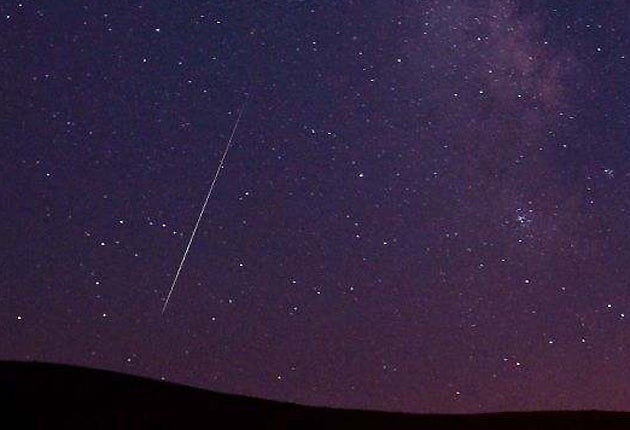What a shower! Catch up on meteors with Twitter

Your support helps us to tell the story
From reproductive rights to climate change to Big Tech, The Independent is on the ground when the story is developing. Whether it's investigating the financials of Elon Musk's pro-Trump PAC or producing our latest documentary, 'The A Word', which shines a light on the American women fighting for reproductive rights, we know how important it is to parse out the facts from the messaging.
At such a critical moment in US history, we need reporters on the ground. Your donation allows us to keep sending journalists to speak to both sides of the story.
The Independent is trusted by Americans across the entire political spectrum. And unlike many other quality news outlets, we choose not to lock Americans out of our reporting and analysis with paywalls. We believe quality journalism should be available to everyone, paid for by those who can afford it.
Your support makes all the difference.It has provided an annual light display for thousands of years and tomorrow it is being shown for the first time on Twitter as astronomers attempt to make it visible to a wider audience.
The Perseids meteor shower has already begun but is expected to reach its peak tomorrow night when up to 80 shooting stars are likely to be seen every hour. People living in the Midlands and the north of the country should get the best views with clear skies for much of the night.
Those in the south, however, are likely to have to turn to Twitter and other resources because rain and clouds will obscure the view.
In what has been described as the world’s first “star party”, the Royal Astronomical Society (Ras) has launched a programme to get as many of the shooting stars posted on the blogging site as possible. Amateur star-gazers around the world have been alerted to “live-tweet” the images they record as part of the Twitter Meteorwatch initiative led by astronomers in Newbury, Berkshire. They hope that using the technology will encourage people who wouldn’t usually pay much attention to the night sky to watch the meteor shower.
The Perseids meteor shower takes place each year as the Earth passes through fragments of debris left by the Swift-Tuttle comet, which orbits the Sun every 130 years, trailing space dust in its wake.
Each shooting star is caused by a speck of dirt burning up as it hits Earth’s atmosphere at 112,000mph. Most burn up in less than a second, often in eye-catching colours, and occasionally they split. Areas away from town lights are best to see the shower but even in cities, it should be possible to see some of the 50 to 80 meteors that burn up each hour.
Dr Bill Massey, from the Ras, said: “It’s such a violent event that you can see it from the ground. You would be unlucky not to see a few. ”
The shooting stars start near the Perseus constellation which starts tonight in the north-east and rises to a point overhead. They can be seen across Earth, except for parts of Antarctica. The northern hemisphere has the best displays.
It is the second time the Newbury Astronomical Society has used Twitter to popularise astronomy. It held an event focusing on the moon earlier this year.
The society president, Richard Fleet, said: “We used our array of telescopes and cameras to provide a constant stream of pictures which we uploaded straight to Twitter.
“We were amazed at how excited people were about our Twitter Moonwatch; we had thousands of people who had probably never looked through a telescope before asking us questions and viewing images.”
Catch a falling star... How to see Perseids
*The Perseids meteor shower is bright enough to be seen with the naked eye. Northern parts of Britain, the Midlands and North Wales will get the best views with cloud cover absent or sporadic. But the south is likely to miss out because of rain. Locations away from city lights are the best places to watch. Light from the moon, especially in the early hours tomorrow, will make it harder to see the meteors. Astronomers advise turning away from the moon to minimise its influence.
Join our commenting forum
Join thought-provoking conversations, follow other Independent readers and see their replies
Comments